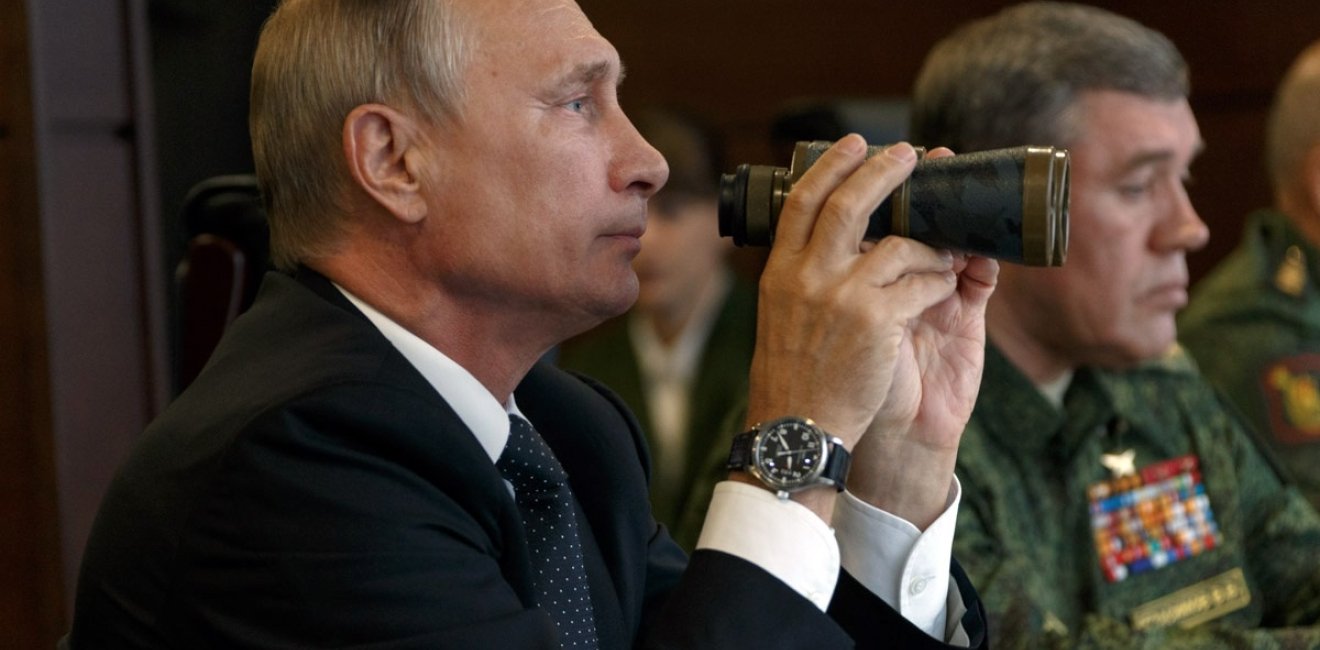
A blog of the Kennan Institute
Russian President Vladimir Putin observing the Zapad-2017 military exercises.
The article first appeared on the Russia Matters website.
As Russia’s annual strategic exercise, titled Zapad-2017, approached, media reports (and plenty of Western officials) contended that Moscow was engaged in a military buildup along NATO’s borders, with particular trepidation over security considerations in the Baltics. Ironically, Russia’s military modernization and force structure expansion had been ignoring the Baltic region until quite recently. Despite provocative air and naval activity concentrated in the area, Russian forces based there are principally defensive, and aging to boot. There are indicators that a change in the size and strength of Russian forces is inevitable, but it will be gradual, in part informed by what forces NATO chooses to deploy.
Moscow’s chief fixation of late has been on establishing large unit formations along Ukraine’s borders, expanding its footprint in Crimea, and upgrading the military equipment distributed across the country’s five military districts. Having achieved some success under the previous state armament program, the Russian General Staff is shifting its attention to the Baltic region, slowly but surely upgrading the antiquated forces based there and deliberating a larger military presence.
The war with Ukraine turned these initial plans upside down and has subsequently proved to be the driving factor behind changes in Russia’s force posture.
Russia’s military has been undergoing a transformation since 2008 to compensate for a prolonged period of divestment and rot in the armed forces after the collapse of the USSR. This process was driven by military reforms launched in late 2008 and by a modernization program begun in 2011 (a new one is due to be announced soon for 2018–2025). Russia’s force structure continues to evolve and expand, and the armed forces steadily acquire modernized or new capabilities. Change is a constant, manifested in new formations and a hurricane of announcements, only a fraction of which are ever implemented.
The modernization program launched in 2011 focused on investing in Russia’s air force, navy, and strategic nuclear forces, to the detriment of the army. Until 2014 Russia was not procuring in the manner of a Eurasian land power and was largely reducing the number of deployed formations on Ukraine’s and NATO’s borders to position them elsewhere. The war with Ukraine turned these initial plans upside down and has subsequently proved to be the driving factor behind changes in Russia’s force posture. (Nonetheless, today the Southern Military District, encompassing the North Caucasus, still maintains greater readiness than any forces abutting NATO territory.)
Conflict with Ukraine reawakened the national leadership to the likelihood of a large-scale war on the western front in the medium to long term. To deal with a constant rotation of forces in Ukraine and to maintain conventional force superiority over Ukrainian forces in the long term, Russia refocused its energy toward that border, or what Russian leadership calls the “southwest strategic direction.” Russia’s General Staff began to bring back all the units originally moved off Ukraine’s borders during the early years of the reforms. This included the 20th Army, along with other units. The next step was reestablishing the 1st Tank Guards Army west of Moscow and setting up the headquarters for a new 8th Combined Arms Army in the Southern Military District.
Spanning an arc from the border with Belarus to Rostov-on-Don in the south, Russia is setting up three new divisions, each of which is formally to have six regiments and an ultimate end strength approaching 10,000 (though they will likely be undermanned for years to come). Supporting these divisions are several brigades, airfields, and combat aviation. The 8th Army is there to be the primary threat to Ukrainian armed forces, and perhaps to coordinate troop rotation in support of separatists in Donbas if the conflict continues several years more.
The current wave of modernization is similarly prioritizing units near Ukraine, especially Crimea, which saw a substantial expansion of Russia’s military presence after Moscow annexed and absorbed a significant percentage of what were previously Ukrainian forces on the peninsula. Russian planning is driven by a strategy to deter Ukraine from believing it can retake Donbas, looking chiefly five to ten years into the future. The intent is to keep the country in a vise, with permanently garrisoned forces along its borders running north to south. Russian forces may even withdraw entirely from Ukraine once this much larger force just across the border is complete.
In the interim, the Baltic region received only a modicum of attention, with few forces, terrible readiness, and fairly dated equipment. Indeed, as recently as last summer the entire Baltic Fleet and ground force command staff were fired, seemingly with good cause.
There has been, and remains, little to indicate that Russia is especially concerned with the Baltic region when compared to the situation further south. Despite bombastic rhetoric about NATO aggression, hostility, and the like, Russia’s military has not prioritized the Baltic relative to other areas. Remarkably, much more attention and energy are being spent on expensive military infrastructure in the Arctic, with a dubious cost-benefit proposition, than on the supposedly existential struggle between Russia and its historic Cold War adversary to the West.
Moscow understands that the United States has an incredible technological advantage in aerospace power, and thus has prioritized air defense, electronic warfare, and other capabilities intended to deny NATO its preferred way of waging war from the air.
That said, in 2017 the bow wave of modernization moving across Russia’s armed forces is steadily making its way from the units positioned around Ukraine to those in the Baltic region and farther north. New fighters, missile regiments, air defense systems, and combat aviation are either in the process of being deployed or will be in the coming years. Meanwhile, the force structure continues to expand, with plans to add two tank battalions to the airborne division in Pskov, near Estonia, for example, while other adjustments may see the military footprint of the 11th Army Corps in Kaliningrad grow, along with the 14th Army Corps in the Northern Fleet. Although Russia remains fixated on building divisions around Ukraine, it is trying to balance this with the need for manpower to fill other units. The state armaments program is pumping out equipment such that slowly but surely, even lower-priority areas receive upgraded capabilities.
Russia’s vision for dealing with U.S. military power is based less on ground forces and more on integrated air defenses combined with long-range conventional strike power and nuclear weapons. Here Russia is working on improving its arsenal of cruise missiles and the capacity to inflict conventional damage at standoff ranges rather than on building large formations bordering NATO territory. Moscow understands that the United States has an incredible technological advantage in aerospace power, and thus has prioritized air defense, electronic warfare, and other capabilities intended to deny NATO its preferred way of waging war from the air.
The various units around Ukraine can of course travel if need be to Belarus and the Baltic. The logistics and resources available to realize such plans on a large scale do require some time, preparation, and practice. In reality, these units can generate only a percentage of their strength on short notice, especially if the maneuver forces are composed of contract-staffed personnel.
When it comes to its force posture in the Baltic region, Moscow is playing it slow—moving about capabilities to threaten and engaging in military activity that generates headlines, while the actual presence remains largely defensive in nature. This too will change in the coming years. More S-400s, Iskander-Ms, better tanks, tactical aviation, logistics units, and everything else Russia’s state armament program has to offer have either begun arriving in or will deploy to the Baltic region by 2020.
The Russian plan is perhaps much less a buildup and more a slow cooking of the overall military presence. Arguably, NATO is doing the very same thing along its eastern flank. Gradualism is the name of this game, and if it is not carefully managed, nobody should be surprised if some years from now the Baltic region finds itself host to a force bidding contest.
Michael Kofman is a senior research scientist with the CNA Corporation and a global fellow at the Woodrow Wilson International Center’s Kennan Institute.
Author
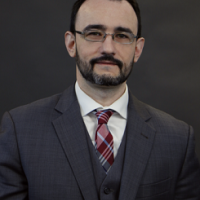
Senior Fellow, Russia and Eurasia Program, Carnegie Endowment for International Peace

Kennan Institute
The Kennan Institute is the premier US center for advanced research on Eurasia and the oldest and largest regional program at the Woodrow Wilson International Center for Scholars. The Kennan Institute is committed to improving American understanding of Russia, Ukraine, Central Asia, the South Caucasus, and the surrounding region though research and exchange. Read more

Explore More in The Russia File
Browse The Russia File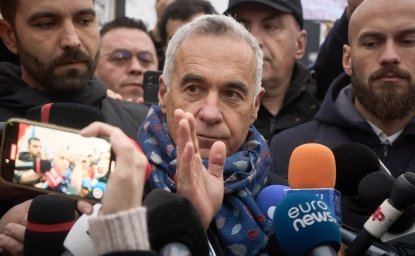
In Search of Russia’s Digital Trace in Romania’s Political Crisis
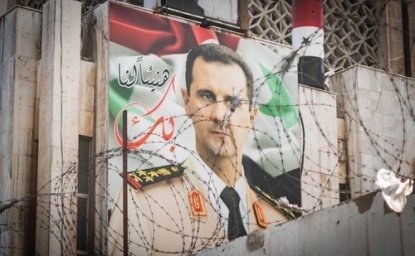
With Syria’s Collapse Russia’s Regional Power Play Disintegrates
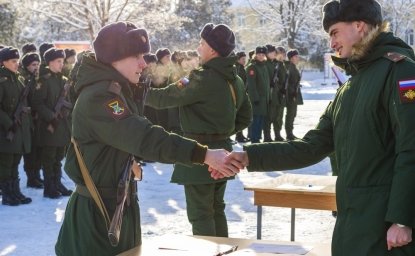
Putin's Strategy Tests Europe's Defense Limits

